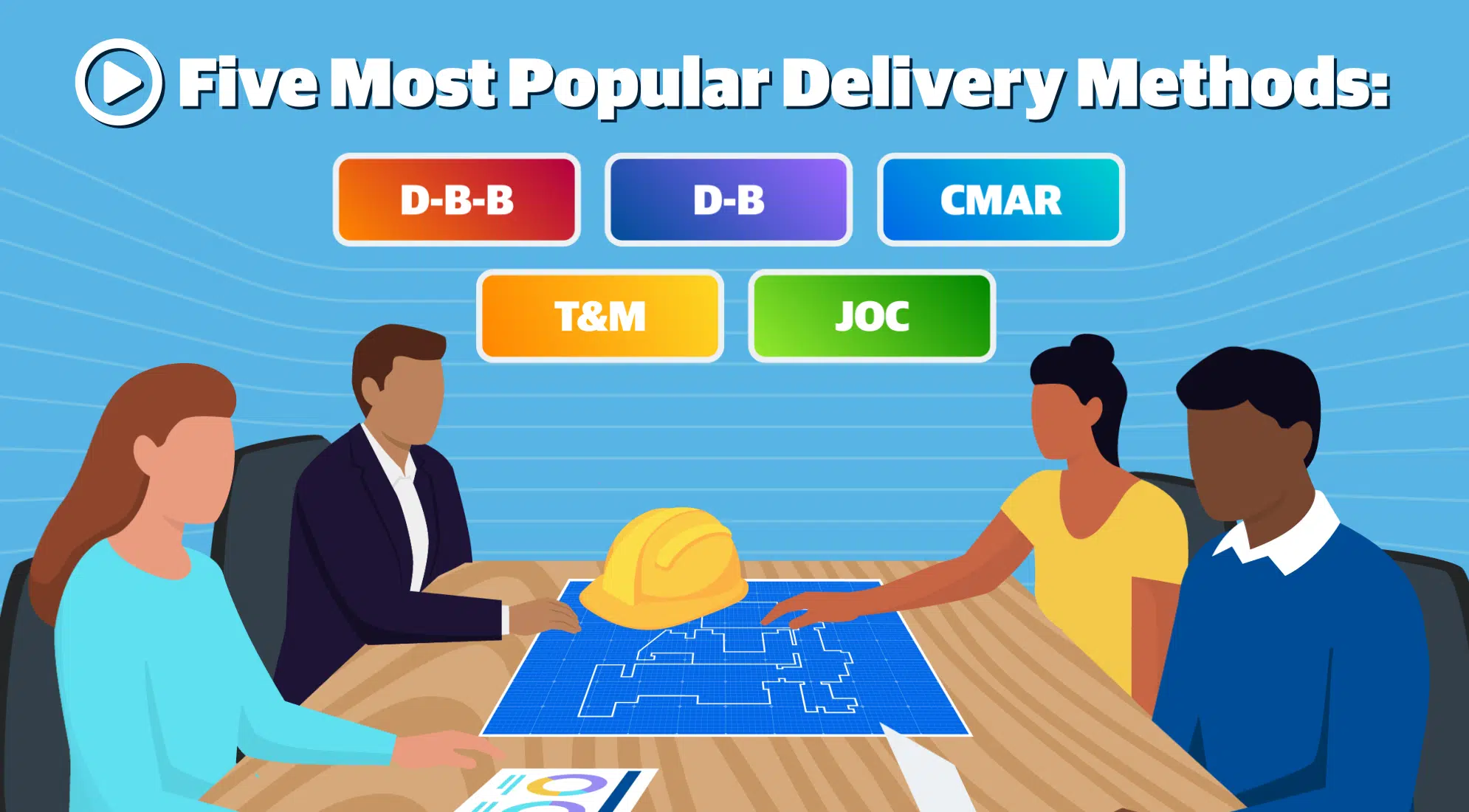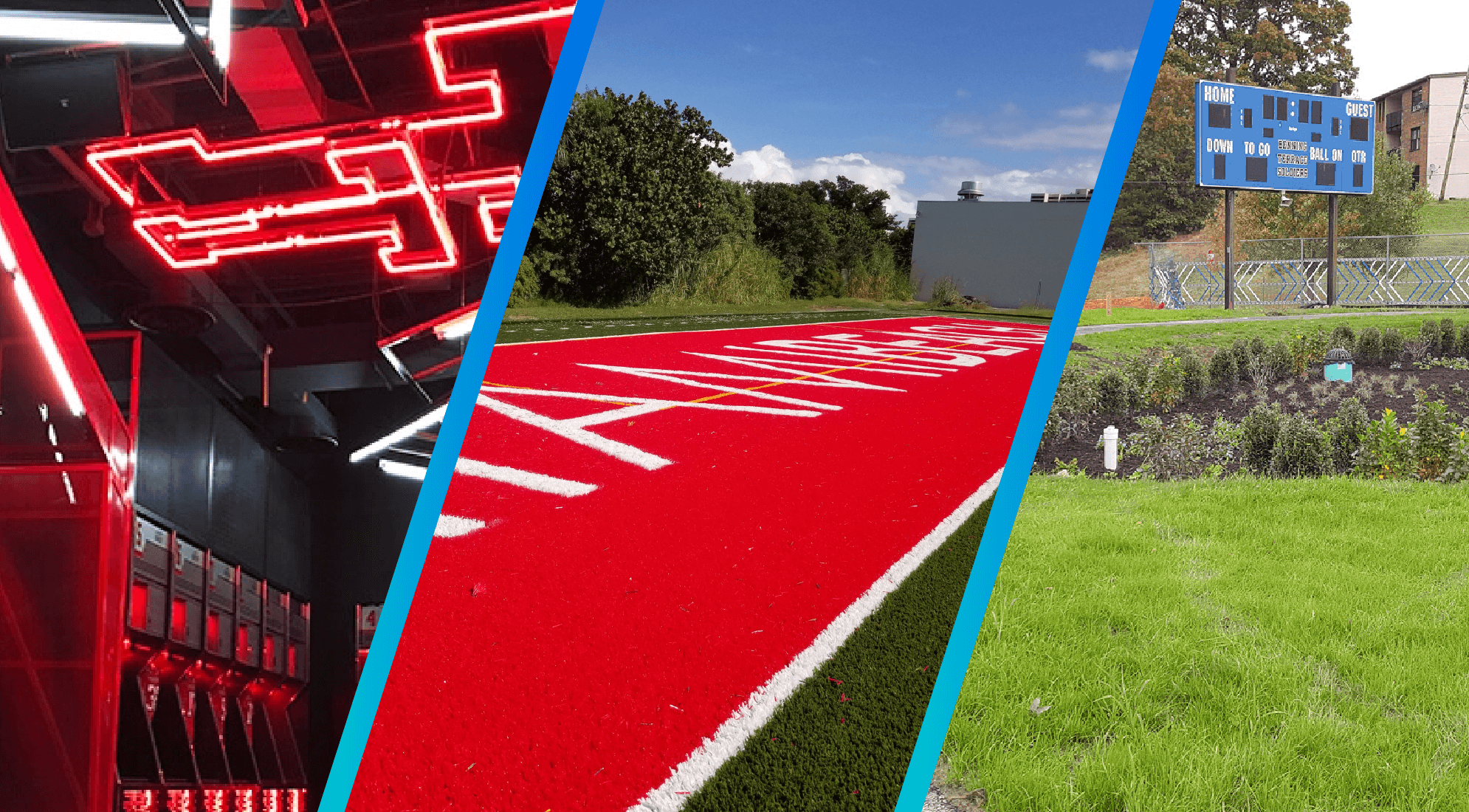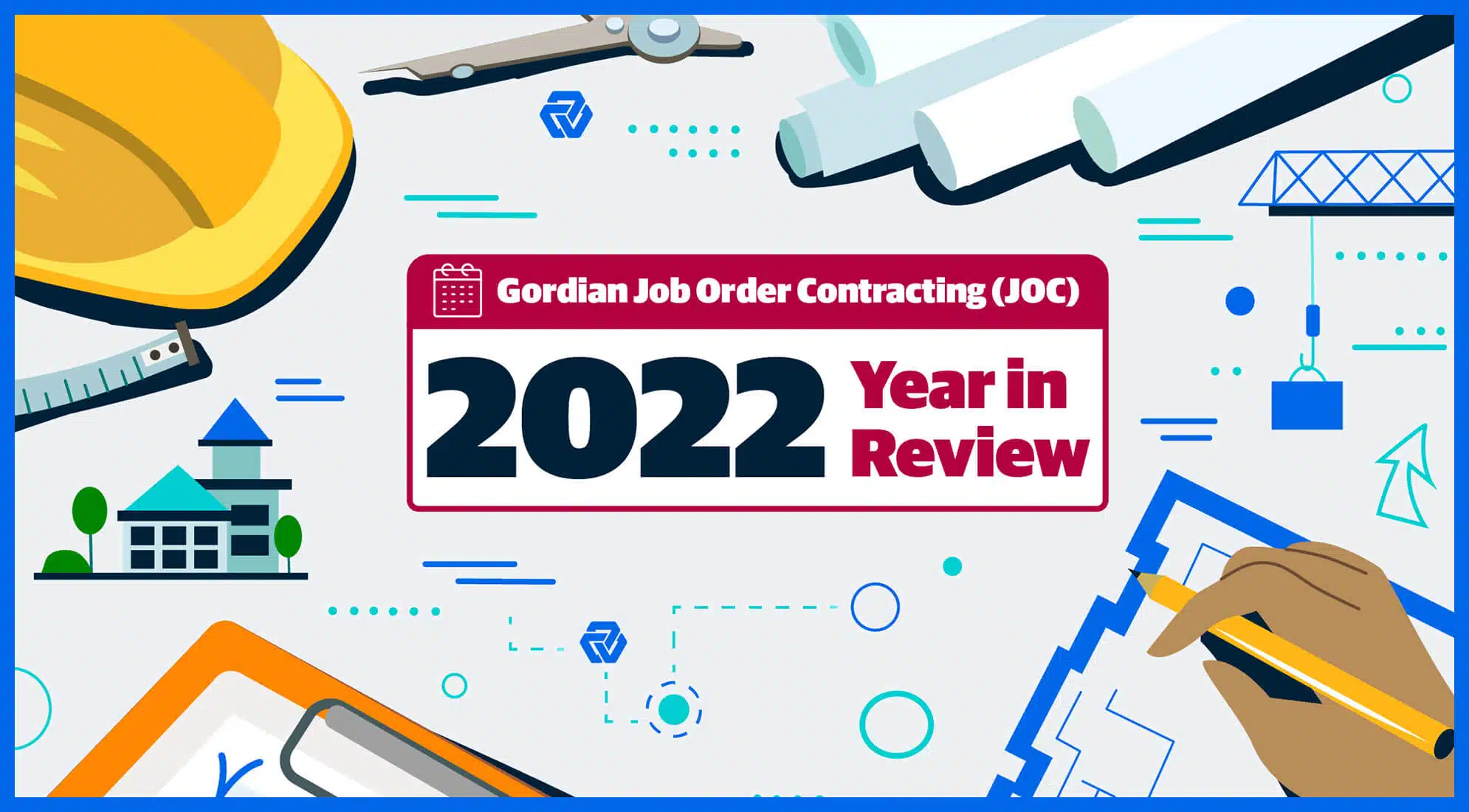Gordian was founded by one of the creators of Job Order Contracting, and we’ve been perfecting the JOC process for over 30 years. But Job Order Contracting is only one of many methods for procuring construction services. Each one was designed for specific purposes and is best utilized for certain types of projects. Knowing the differences between them and when to use each delivery method can determine a projects’ success.
In this series, we’ll compare some of the most widely used project delivery methods, including Design-Bid-Build, Construction Manager at Risk, and Time and Materials. For this post, let’s take a look at Design-Build.
Design-Build Method: The Basics
To begin the Design-Build process, project owners draft a project design, detailing the overall project specifications and requirements, and provide it to various firms or teams to respond with proposals. The proposers are typically contractors, construction managers, Design-Build firms or joint ventures made up of some combination of those players. These teams then respond with proposals that represent their best price for the project. Design-Build may also include preliminary work such as scoping potential building sites, working with banks to secure funding and getting certain approvals and permits.
See how five of the most common construction project delivery methods compare here.
In Design-Build, proposals are similar to bids in other delivery methods. The key difference between a bid and a proposal is that proposals often include notes, or alterations, to the project design. By allowing for input from another party, the Design-Build method gives owners the ability to choose between multiple options, each offering its unique blend of design elements and value. The project owners then enter into a contract with one provider to design and build the project. The owner usually follows a best value selection process to choose who will be responsible for designing and building the project.
Advantages of the Design-Build Method
The Design-Build method can simplify contractual relationships associated with traditional project delivery methods like Design-Bid-Build (DBB). In the DBB method, project owners contract with two separate parties, a designer and a contractor, to execute the project. In the design-build method, project owners replace the designer and contractor with a single party. This single party, called a Design-Builder, is usually an architect, engineer or contractor who fills both the roles of designer and contractor. This is simpler for project owners because the Design-Builder can serve as their single point of contact, rather than the owner coordinating between multiple parties to complete a project.
See how Gordian’s Job Order Contracting compares to delivery methods like Design-Build.
The Design-Build method can also be beneficial for project owners by accelerating project timelines. After the owner has chosen a proposal, the design-builder’s team can immediately start securing permits and beginning construction. Once started, the project can also be phased – the first phase can be designed, and construction can start on that phase while the next phase is being designed, and so on. This makes Design-Build ideal for large or complex projects, and for projects where an accelerated, phased schedule is beneficial.
Disadvantages of the Design-Build Method
Compared to other project delivery methods, Design-Build can be simple and efficient, but this can come at the cost of increased risk. Because the Design-Builder is the sole party responsible for the project, they are fully responsible for the outcome of the project. This means owners who choose the Design-Build delivery method lose the advantage of having a separate party oversee the quality of construction. Instead, the Design-Builder has complete control during construction. This is why choosing a Design-Builder carefully can be integral to success when choosing to use the Design-Build method.

Comparing the Design-Build Method and Job Order Contracting
Other project delivery methods can also deliver on the promise of saving time, without the increased risk. One example is Gordian’s Job Order Contracting (JOC), a delivery method that allows many projects to be completed through a single, competitively-awarded contract. This single-solicitation process enables projects to start faster and creates partnerships between project owners and awarded contractors, resulting in higher quality work.
If you’re looking to complete large or complex projects that can be broken down into phases and want to make sure they’re completed quickly, the Design-Build project delivery method might be right for you. However, if the idea of trusting one party to be responsible for design and construction throughout the entire project seems like a risk, there may be another project delivery method that is better suited for you. Click here for an in-depth comparison of common delivery methods.





